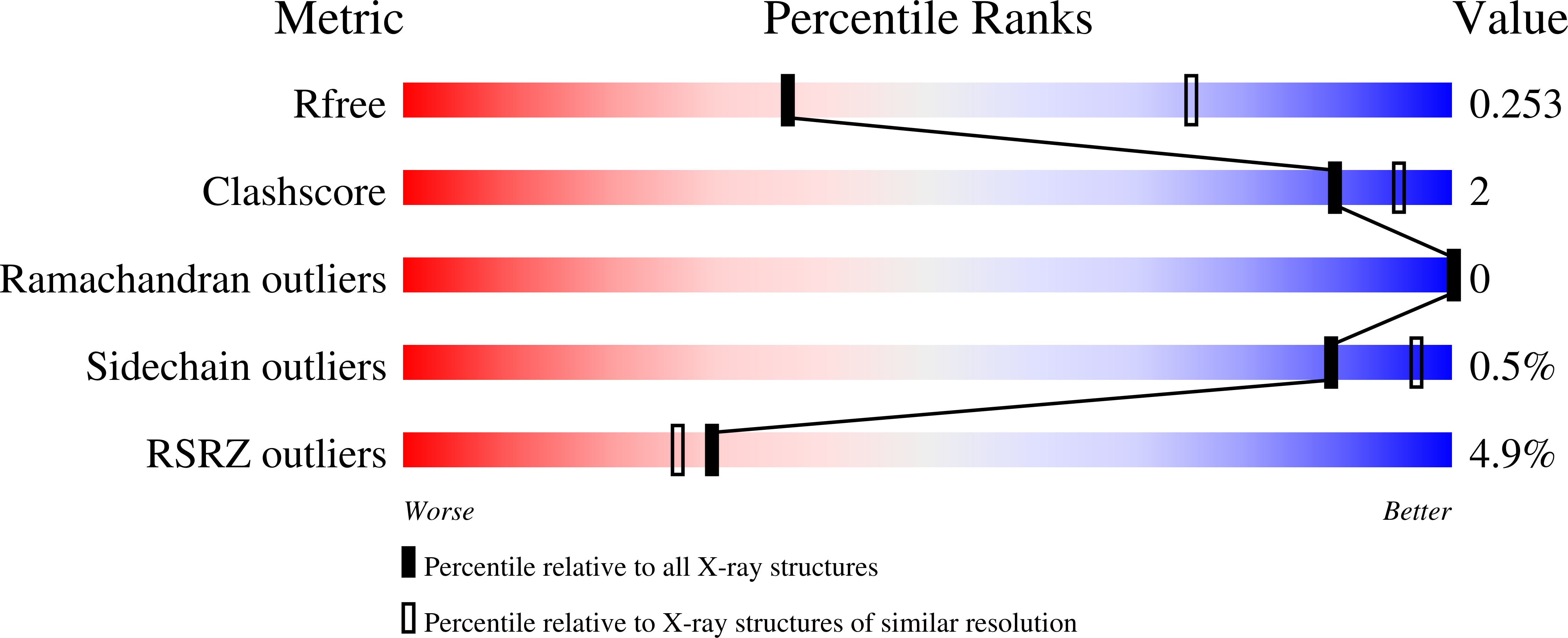Structures of Trypanosoma brucei Methionyl-tRNA Synthetase with Urea-Based Inhibitors Provide Guidance for Drug Design against Sleeping Sickness.
Koh, C.Y., Kim, J.E., Wetzel, A.B., de van der Schueren, W.J., Shibata, S., Ranade, R.M., Liu, J., Zhang, Z., Gillespie, J.R., Buckner, F.S., Verlinde, C.L., Fan, E., Hol, W.G.(2014) PLoS Negl Trop Dis 8: e2775-e2775
- PubMed: 24743796
- DOI: https://doi.org/10.1371/journal.pntd.0002775
- Primary Citation of Related Structures:
4MVW, 4MVX, 4MVY, 4MW0, 4MW1, 4MW2, 4MW4, 4MW5, 4MW6, 4MW7, 4MW9, 4MWB, 4MWC, 4MWD, 4MWE - PubMed Abstract:
Methionyl-tRNA synthetase of Trypanosoma brucei (TbMetRS) is an important target in the development of new antitrypanosomal drugs. The enzyme is essential, highly flexible and displaying a large degree of changes in protein domains and binding pockets in the presence of substrate, product and inhibitors. Targeting this protein will benefit from a profound understanding of how its structure adapts to ligand binding. A series of urea-based inhibitors (UBIs) has been developed with IC50 values as low as 19 nM against the enzyme. The UBIs were shown to be orally available and permeable through the blood-brain barrier, and are therefore candidates for development of drugs for the treatment of late stage human African trypanosomiasis. Here, we expand the structural diversity of inhibitors from the previously reported collection and tested for their inhibitory effect on TbMetRS and on the growth of T. brucei cells. The binding modes and binding pockets of 14 UBIs are revealed by determination of their crystal structures in complex with TbMetRS at resolutions between 2.2 Å to 2.9 Å. The structures show binding of the UBIs through conformational selection, including occupancy of the enlarged methionine pocket and the auxiliary pocket. General principles underlying the affinity of UBIs for TbMetRS are derived from these structures, in particular the optimum way to fill the two binding pockets. The conserved auxiliary pocket might play a role in binding tRNA. In addition, a crystal structure of a ternary TbMetRS•inhibitor•AMPPCP complex indicates that the UBIs are not competing with ATP for binding, instead are interacting with ATP through hydrogen bond. This suggests a possibility that a general 'ATP-engaging' binding mode can be utilized for the design and development of inhibitors targeting tRNA synthetases of other disease-causing pathogen.
Organizational Affiliation:
Department of Biochemistry, University of Washington, Seattle, Washington, United States of America.




















